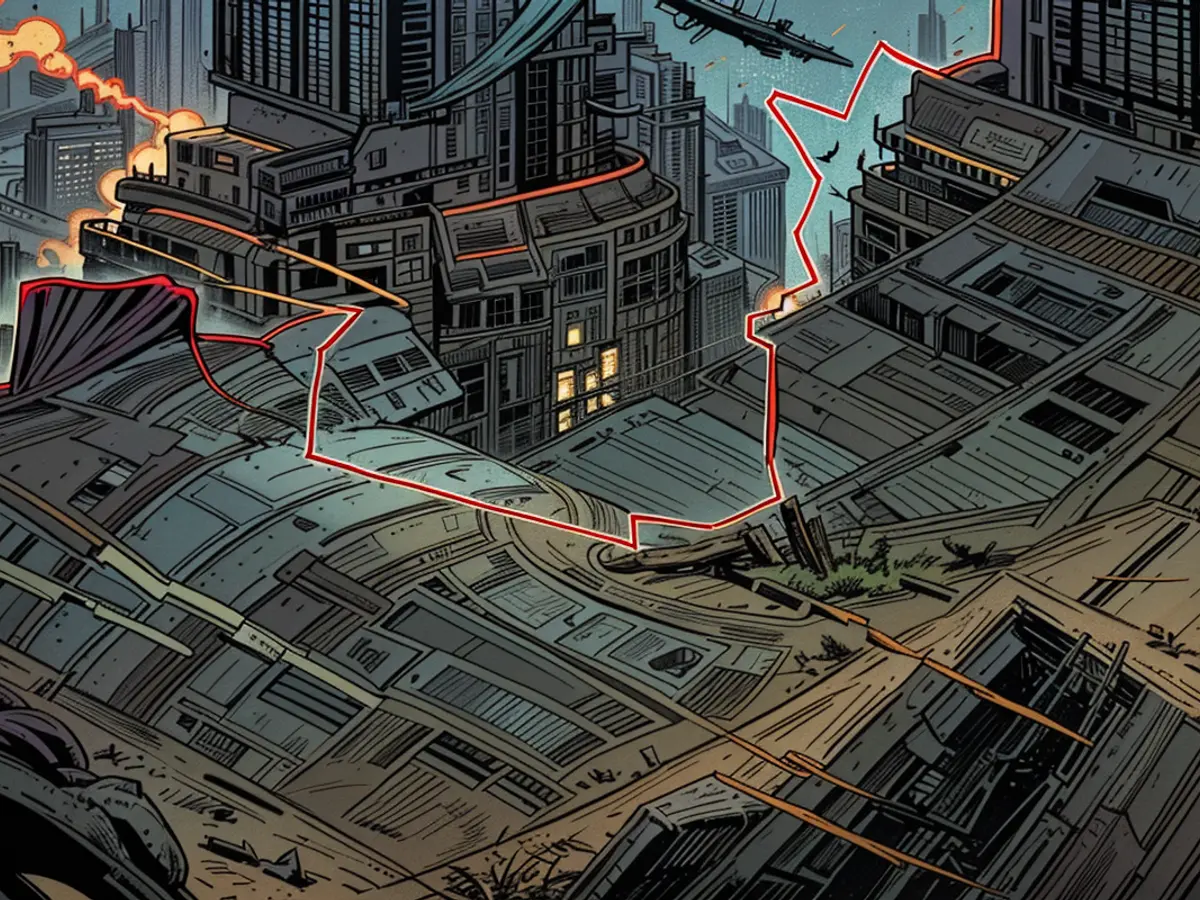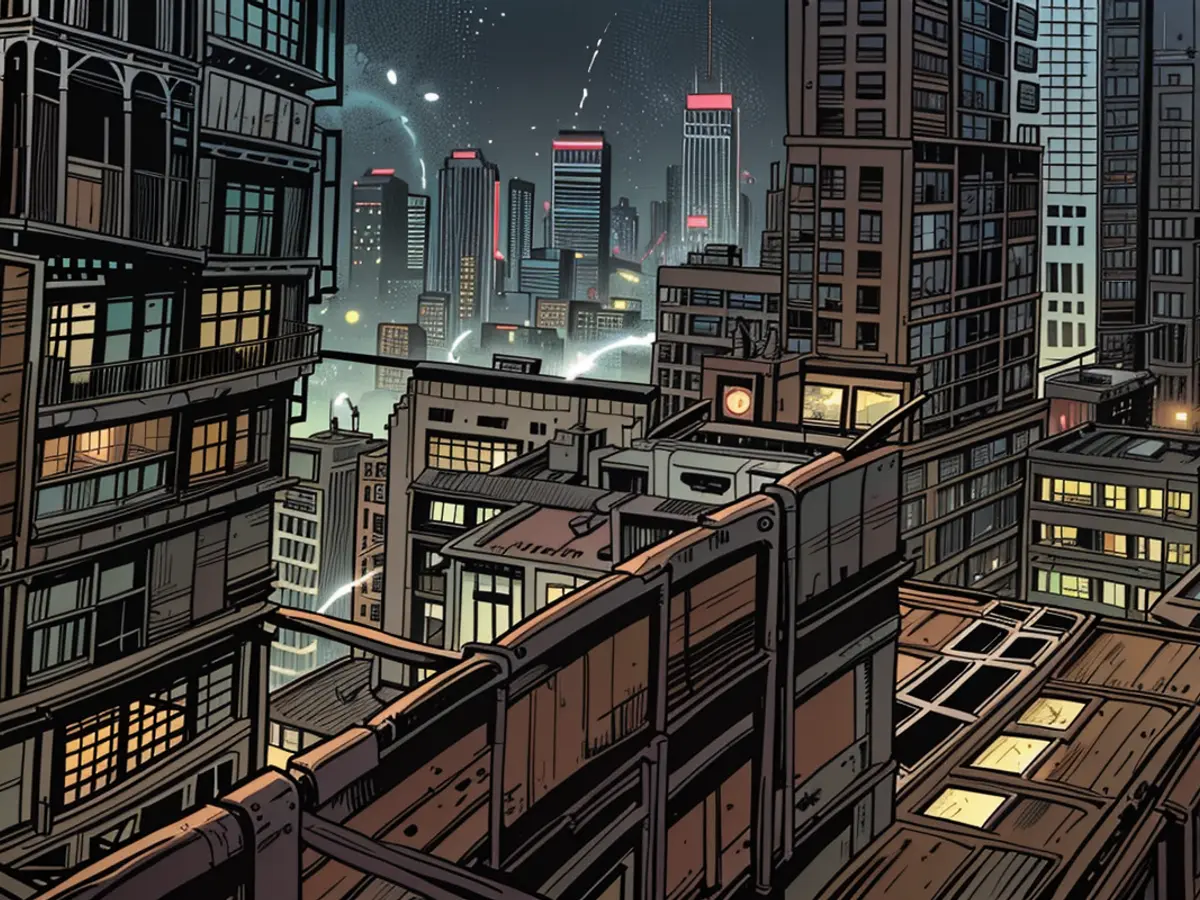Russians are exerting dominance over Wuhledar
In the southeastern Ukraine, Ukrainian forces are under heavy strain: Where the Donetsk front meets the Saporishshia sector, Russian infantry is breaching Ukrainian lines. The mining town of Wuhledar, which has served as a stronghold since 2022, appears to be on the verge of collapse, potentially marking a turning point.
The Russian push against Ukraine is posing a substantial setback: The city of Wuhledar in southeastern Ukraine might not last much longer. Following Russian victories at Pokrovsk and Ukrainian successes in the Kursk region, Russian troops have pushed further into Ukrainian territory, southwest of Donetsk, in recent weeks.
In mid-September, Russian troops captured two substantial mine shafts northeast of the mining town. Last week, Russian forces unexpectedly advanced northward, west of the city, crossing the Kachlahatch River. The town of Wuhledar, with a pre-attack population of around 15,000, now finds itself sandwiched between two Russian tactical envelopments and is at risk of encirclement.
The issue is that Russian artillery observers situated on the waste piles in the northeast can observe Wuhledar's compact city center and the terrain north of the city center, where the final open Ukrainian supply routes run along narrow strips of forest and hedges. "One must assume that the 72nd mechanized brigade, equipped with tanks and combat vehicles, will not be able to hold the area," military expert Markus Reisner stated in an article on ntv.de.
Examining the map, one can see the precarious situation of Ukrainian forces: Wuhledar primarily consists of a cluster of high-rise buildings from the 1960s. Built during Soviet times to house tens of thousands of workers for nearby coal mines, the city has endured continuous shelling for months.
The relentless bombardment of artillery shells and the impact of precision-guided munitions have transformed the city into a vast wasteland. Cover and secure shelters might be found only in concrete structures and the final remaining basements. In mid-September, powerful explosions shook the region: Russian troops detonated the prominent tower of the "Pivdennodonbaska Mine No. 3," once one of the largest coal mines in the country.
For Ukraine, Wuhledar holds significant symbolic significance: Wuhledar was a representation of Ukrainian wealth in natural resources. Throughout the conflict, Wuhledar has come to symbolize Ukrainian resilience. The city has been close to the frontline nearly since the start of the Russian invasion.
Battlefield of grueling battles
A few hundred meters south of the mostly deserted city, Ukrainian forces inflicted a devastating blow on the Russians in February 2023. Numerous heavy Russian armored units were reportedly destroyed there as they attempted a frontal assault on the city, caught in the crossfire of Ukrainian anti-tank missiles.
It was said that the Russians moved "over their own dead bodies" in and around Wuhledar during the winter months of 2022/23. Videos circulating online showed Russian convoys retreating in panic under targeted Ukrainian fire in the minefields surrounding the city. The fighting in Wuhledar's outskirts barely subsided in the past two years of war. The Russians are believed to have incurred immense losses south of Wuhledar.
Even in the Russian military blogger community, the strategy was openly criticized. However, this did not result in any tangible consequences in Moscow. Instead, one of the commanders responsible for the Russian failure was promoted by Kremlin leader Vladimir Putin a few months later.
The exact number of Ukrainian defenders in the approximately 1.2 square kilometer area remains unknown. The last inhabitants of the city are likely to have left by now. The Ukrainian leadership maintains a veil of secrecy over its military strategies.
Open Terrain at the Rear
If Wuhledar falls, the initial strategic impact would be minimal, according to Colonel Reisner of the Austrian Armed Forces. "For supply security at the front, Wuhledar is not as critical as the contested logistics hub of Pokrovsk further north," he explained in an interview on the frontline situation. "The primary important supply route runs 10 kilometers east of Wuhledar, deeper into Ukrainian territory."
However, the Russian territorial gains in the region are likely to be burdensome for the Ukrainians. Behind Wuhledar, open farmland stretches out, offering few natural defensive barriers such as waterways or ridgelines. Larger settlements are scarce in the area.
"We clearly see that the Russians are attempting to achieve a result before the onset of the muddy season in the fall," Reisner commented on the Russian operational efforts. Wuhledar lies at the junction between the front east of Donetsk and the Saporishshya front in southern Ukraine. The combat zones around Pokrovsk are less than 60 kilometers away in a straight line to the north. If the Russians manage to capture the Wuhledar stronghold, other front sections may become unstable.
The Russian push in Wuhledar is indicative of larger Wars and Conflicts in Ukraine: The capture of Wuhledar could potentially provide Russian troops with a strategic advantage, disrupting Ukrainian supply routes and potentially affecting stability in other front sections.
The situation in and around Wuhledar serves as a testament to the ongoing Wars and Conflicts in Ukraine: The battle for Wuhledar has resulted in significant losses for both sides, with the Russians facing criticism for their strategy and the Ukrainians maintaining a veil of secrecy over their military strategies.










